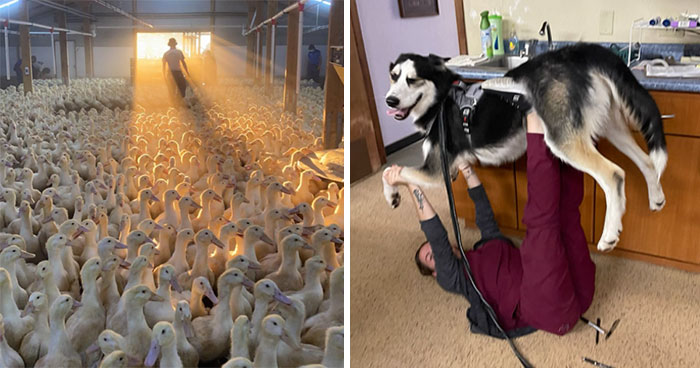As dog parents, we want to keep our pups happy and healthy for as long as possible. To do that, we need to be familiar with different potential health conditions so that we can recognize problems early on and intervene. This includes neurological disorders. In this article, we will discuss the canine nervous system, signs your dog may have a neurological issue, and some common neurological disorders in dogs.
- Common signs of neurological issues include seizures, difficulty walking, and unusual eye movements.
- Epilepsy in dogs can be idiopathic and treatment often involves anti-epileptic drugs.
- Cognitive Dysfunction Syndrome (CDS) in dogs is similar to dementia, with treatments supporting brain function.
The information provided herein is for informational purposes only. Please refer to our disclaimer for more details..
What Are Neurological Disorders in Dogs?
Veterinary neurology is a field of veterinary medicine concerned with the anatomy and function of the brain, spinal cord, and nerves of animals. The nervous system controls and regulates the body’s activities. This complex network of neurons and nerves affects how a dog experiences sensation and movement such as reflexes.
Neurological disorders are health conditions in which the anatomy or function of the nervous system is abnormal or negatively affected. Neurological problems in dogs can have many underlying causes including inflammation, infection, traumatic injury, toxicity, nutritional or metabolic disorders, degenerative disease, and cancer. Certain neurological conditions may be more common in a certain breed, age group, or sex.
Anatomy of the Canine Nervous System
A dog’s nervous system is made up of his brain, spinal cord, and nerves. The nervous system can be divided into the central nervous system (CNS) and the peripheral nervous system (PNS). The central nervous system includes the brain and spinal cord while the peripheral nervous system consists of the nerves throughout the rest of the body.
The brain is comprised of 3 main sections:
• Brain Stem: Controls basic life functions
• Cerebrum: In charge of making conscious decisions
• Cerebellum: Responsible for movement or motor control
The spinal cord attaches to the brain and travels from the neck to the tail. Peripheral nerves then branch off the spinal cord and correspond to different parts of the body.
The brain and spinal cord are covered by specialized tissues known as meninges. They are also surrounded by cerebrospinal fluid to protect the brain and spinal cord.
How Does the Nervous System Work in a Dog?
On the smallest level, the body contains billions of nerve cells called neurons. These neurons receive and transmit electrical signals using chemicals known as neurotransmitters. There are sensory neurons, motor neurons, and the autonomic nervous system.
Sensory neurons carry signals from the body, to the spinal cord, then to the brain. Sensory neurons take input from the environment and control how a dog perceives experiences like taste, smell, touch, sound, heat, vision, pain, position, and balance.
Motor neurons send command signals from the brain to the spinal cord, and then to the muscles. Motor neurons are critical for muscle control and voluntary movement.
There are also specialized neurons that control and regulate basic bodily functions that we often consider unconscious or automatic. These specialized neurons make up the autonomic nervous system which is crucial for functions like digestion and pumping of the heart.
Signs That Your Dog May Have a Neurological Issue
Neurological issues in dogs can manifest in a wide variety of ways depending on the specific condition as well as the location and duration of the problem. While symptoms can vary, these are some common signs and symptoms of neurological disorders in dogs:
• Seizures
• Difficulty walking or an abnormal gait with a lack of coordination
• Head tilt, leaning, or circling
• Dragging the feet or knuckling over the paws
• Weakness or paralysis
• Unusual or rapid eye movements
• Disorientation or confusion (e.g. getting stuck in corners, staring into space)
• Changes in mentation or behavior
• Loss of balance
• Pain associated with the neck or back
• Muscle tremors, trembling, or twitching
• Urinary or fecal incontinence
• Changes in activity level or appetite
If you observe any of these symptoms or otherwise suspect your dog has a neurological issue, make an appointment to see your vet or a veterinary neurologist.
Common Neurological Disorders in Dogs
Many neurological conditions can affect dogs ranging from cancer (e.g. brain and spinal tumors) to strokes to brain malformations like hydrocephalus (read this article to learn about hydrocephalus in cats). Let’s take a closer look at some of the more common neurological disorders seen in dogs. Please keep in mind that this is not an exhaustive list of the neurological disorders that are possible in dogs.
Epilepsy (Seizures)
Epilepsy or seizures are caused by abnormal electrical activity in the brain. Seizures can occur due to a structural abnormality in the brain, toxin exposure, infectious disease, or metabolic disease. However, the most common type of epilepsy is idiopathic epilepsy which has no identifiable cause but is thought to be inherited.
There are two main types of seizures: generalized (also known as grand mal or tonic-clonic seizures) and focal. Dogs with generalized seizures often fall over suddenly and experience involuntary movement (e.g. paddling), loss of consciousness, foaming at the mouth, and may urinate or defecate. In contrast, focal seizures affect a specific part of the body and can look like facial twitching or repetitive chomping and chewing. A focal seizure can also progress to a generalized seizure.
Depending on the nature of your dog’s seizures, your veterinarian may prescribe anti-epileptic drugs such as phenobarbital, potassium bromide, levetiracetam, or zonisamide. If your dog has seizures, it is helpful to time the seizures and keep a journal or log to identify patterns just before the onset of seizures.
If your dog has more than one seizure in a 24-hour period or a seizure that lasts more than 5 minutes, seek immediate veterinary care as this can be a life-threatening medical emergency.
Intervertebral Disc Disease
Intervertebral disc disease (IVDD) occurs when an intervertebral disc bulges or ruptures, causing it to press on the spinal cord or spinal nerves. Between the vertebrae or spinal bones, there are intervertebral discs that act like cushions and absorb shock. These intervertebral discs can degenerate, calcify, or herniate due to trauma.
There are two main types of IVDD. In Type I IVDD, the inner part of the intervertebral disc calcifies and herniates through the outer layer like the inside of a jelly doughnut. Type I IVDD is more common in breeds with long backs and short legs like Dachshunds, French Bulldogs, and Beagles. Type II IVDD is characterized by a slower degeneration of the outer layer of the intervertebral disc and is typically chronic and progressive. Type II IVDD is more common in large breed dogs like the German Shepherd.
In IVDD, symptoms depend on the location and severity of spinal cord compression ranging from neck or back pain to paralysis and incontinence. In mild cases of IVDD, medical management with pain medication and strict rest and activity restriction may be appropriate. In cases where surgery is recommended, it is important to pursue surgery as soon as possible since this greatly impacts prognosis and a dog’s ability to walk after recovery.
While we can’t prevent degeneration of the intervertebral discs, we can try to protect our dogs from spinal cord injury by keeping them at a healthy weight and by preventing them from jumping on and off furniture.
Vestibular Disease
Dogs with vestibular disease do not properly understand their orientation or position in space. In other words, dogs with vestibular disease do not know up from down which negatively affects their ability to move appropriately. These dogs often experience dizziness, motion sickness, ataxia (a wobbly and uncoordinated gait), and nystagmus (rapid, involuntary back and forth or rotational eye movement).
Vestibular disease can occur due to a central problem in the brain such as a tumor, vascular event (e.g. stroke), or infection. It can also happen as a result of a middle ear infection because the middle ear contains receptors that inform us about rotation, linear acceleration, and gravity.
However, the most common form of vestibular disease in dogs is canine idiopathic vestibular disease, also commonly referred to as old dog vestibular disease as it is more common in older dogs. In idiopathic vestibular disease, we do not know the underlying cause but the good news is that these dogs typically improve over time. These dogs are usually treated with anti-nausea medication until their symptoms resolve.
Cognitive Dysfunction
Cognitive dysfunction syndrome (CDS), also referred to as dog dementia, is a common degenerative canine neurological disease resulting from age-related changes to the brain. In dogs with cognitive dysfunction, there is a build-up of a protein called beta-amyloid which is toxic to neurons. This causes the brain cells to stop functioning properly or to die off, which can lead to physical and behavioral changes that are gradually progressive. Symptoms may include disorientation, anxiety, changes in sleeping patterns, and soiling in the house.
A treatment plan may consist of a prescription diet formulated to support brain function and enrichment through interactive puzzles and toys. Your veterinarian may also recommend supplements or prescribe medications like Selegiline which is approved for CDS treatment.
Degenerative Myelopathy
Degenerative myelopathy (DM) is a chronic degenerative disease of the spinal cord. It is a non-painful condition that begins with hindlimb weakness, muscle wasting, and mobility issues that progress to eventual paralysis, resulting in an inability to walk. Unfortunately, degenerative myelopathy is a progressive disease with no cure. Thus, disease management is aimed at preserving the dog’s quality of life through strategies like weight management, physical therapy, pet ramps, slings, and wheelchairs. Read this article to learn tips for caring for a paralyzed dog.
Wobbler Syndrome
Wobbler syndrome, also known as cervical spondylomyelopathy, is a disease affecting the spine of the neck region. Reflecting the condition’s name, affected dogs often have a wobbly gait, primarily in the hind legs. These dogs may also walk with their head down if they are experiencing neck pain. Large and giant breed dogs seem predisposed to this disease, including Dobermans and Great Danes. Treatment options include surgery or medical management with anti-inflammatory drugs and activity restriction. Because their necks are affected, neck leashes should be avoided and substituted with a harness.
262views
Share on FacebookExplore more of these tags
Has Bored Panda become a site for pet advice or what? This is ridiculous. And they get close to zero votes, so why continue? I don't want to scroll through these every time.
And like 10 in one day? And I am not taking any animal advice from an humorous site that has 0 fact check.. the ordinary 'facts' that are presenter here are not 100 % either, so I don't trust not read this therefore. No sourses to any of the things presented. I'm not risking any, sorry not sorry.
Load More Replies...Has Bored Panda become a site for pet advice or what? This is ridiculous. And they get close to zero votes, so why continue? I don't want to scroll through these every time.
And like 10 in one day? And I am not taking any animal advice from an humorous site that has 0 fact check.. the ordinary 'facts' that are presenter here are not 100 % either, so I don't trust not read this therefore. No sourses to any of the things presented. I'm not risking any, sorry not sorry.
Load More Replies...
 Dark Mode
Dark Mode 

 No fees, cancel anytime
No fees, cancel anytime 







 Image credits:
Image credits:  Image credits:
Image credits: 










































-2
2